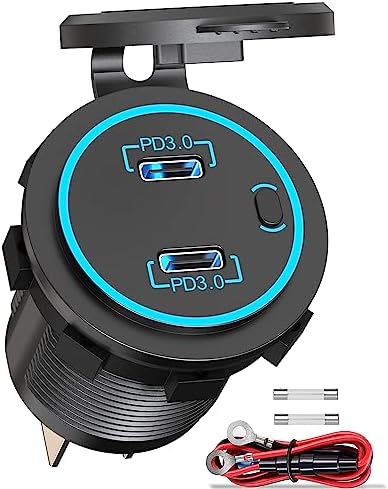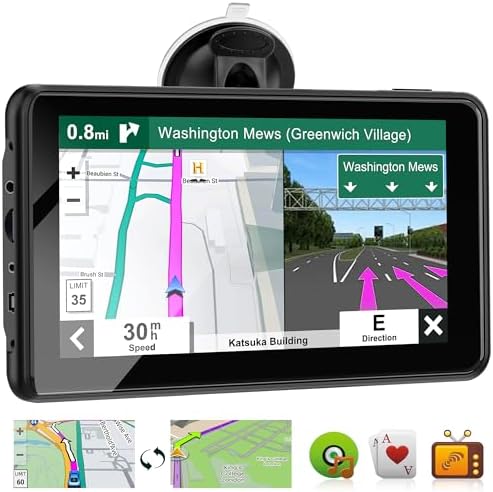Get ready to take your trucking experience to the next level with the top truck GPS systems. Say goodbye to the stress of getting lost or stuck in traffic and say hello to reliable routes and seamless navigation. With these GPS systems, you can optimize your journey and unlock efficient routes that will save you time and fuel. Get ready for a smoother and more enjoyable ride on the road. So, strap in, and let’s enhance your journey with top truck GPS systems.

Top truck GPS systems
Brand #1
Brand #1 is known for its top-notch truck GPS system that offers a wide range of features to enhance your trucking experience. With a user-friendly interface and reliable navigation, this brand is a popular choice among truck drivers. The GPS system offers accurate and up-to-date maps, ensuring that you never get lost on your journey. Additionally, it provides real-time traffic updates, helping you avoid congested areas and minimize delays. With its truck-specific features, you can rest assured that your GPS system is tailored to meet the needs of your trucking lifestyle.
Brand #2
For those seeking a reliable and efficient truck GPS system, Brand #2 is an excellent choice. This brand offers a variety of features that make your trucking experience smooth and hassle-free. From a large screen size for easy visibility to Bluetooth connectivity for hands-free calling, this GPS system has it all. With its accurate voice guidance, you can focus on the road while getting clear directions to your destination. The system also provides regular map updates, ensuring that you always have the most current mapping information.
Brand #3
If you’re in search of a truck GPS system that offers excellent value for money, Brand #3 is worth considering. This brand offers a range of budget-friendly options without compromising on quality and functionality. With its truck-specific features, you can navigate confidently, knowing that your GPS system takes into account the unique requirements of your truck. The system also provides real-time traffic alerts, allowing you to avoid congested roads and arrive at your destination on time. Whether you’re a seasoned truck driver or just starting your journey, Brand #3 offers reliable navigation solutions at an affordable price.
Factors to consider when choosing a truck GPS system
Navigating the world of truck GPS systems can be overwhelming, but considering these factors can help you make an informed decision:
Screen size
The screen size of a truck GPS system is an essential factor to consider, as it affects visibility and ease of use. Larger screens generally offer better readability, especially when dealing with complex routes and multiple instructions. However, it’s important to strike a balance, as excessively large screens may obstruct your view of the road. Consider your personal preference and the size of your truck’s cabin when choosing a suitable screen size.
Map updates
Up-to-date maps are crucial for accurate and reliable navigation. When choosing a truck GPS system, opt for one that offers regular map updates. This ensures that you have access to the latest roads, points of interest, and other relevant information. Outdated maps can lead to incorrect directions and missed opportunities for optimized routes. Look for GPS systems with lifetime map updates or options to easily update maps as needed.
Traffic alerts
Real-time traffic updates are a valuable feature that helps you avoid congestion and save time on the road. Look for a truck GPS system that provides traffic alerts and suggestions for alternative routes. This feature can make a significant difference in your journey, especially when encountering unexpected traffic or road closures. Some GPS systems even offer predictive traffic capabilities, allowing you to plan your route ahead of time to avoid potential delays.
Bluetooth connectivity
Bluetooth connectivity enables hands-free calling, allowing you to make and receive calls safely while on the road. This feature is particularly important for truck drivers who need to stay connected without compromising their focus on driving. With Bluetooth connectivity, you can pair your GPS system with your smartphone and seamlessly answer calls through the GPS device. Look for a truck GPS system that offers this convenient feature to enhance your overall driving experience.
Voice guidance
Clear and accurate voice guidance is essential when navigating unfamiliar routes. A reliable truck GPS system should provide precise turn-by-turn instructions in a clear and understandable voice. This allows you to keep your eyes on the road while still receiving guidance to your destination. Highly customizable voice guidance options, such as selecting the language or adjusting the volume, can further enhance your GPS experience.
Truck-specific features
Truck-specific features are vital for truck drivers, as they cater to the unique needs and requirements of trucks on the road. Look for a GPS system that incorporates features such as truck-specific POIs (points of interest), weight and height restrictions, and potential hazard warnings. These features ensure that you navigate safely and efficiently, avoiding low bridges, narrow roads, and other obstacles that may pose a challenge for trucks.
Mounting options
When choosing a truck GPS system, consider the available mounting options and compatibility with your truck’s cabin layout. Look for systems that offer flexible and sturdy mounting solutions, allowing you to position the GPS device at an optimal and convenient location. Some GPS systems come with suction cup mounts, while others offer adhesive or dashboard mounts. Choose a mounting option that suits your preferences and truck’s interior design.
Price
Price is a significant factor to consider when shopping for a truck GPS system. Determine your budget and look for options that offer the best value for your money. It’s important to strike a balance between affordability and the features you require. Consider your specific needs and prioritize the features that are most important to you. While it can be tempting to opt for the cheapest option, investing in a higher-quality GPS system may offer better performance, durability, and overall satisfaction in the long run.

Benefits of using a truck GPS system
Optimized routes
One of the key benefits of using a truck GPS system is the ability to optimize your routes. Truck GPS systems are specifically designed to consider the unique requirements of trucks, such as weight and height limitations, and provide routes that avoid low bridges, narrow roads, and other obstacles. By taking into account these factors, GPS systems can guide you along the most efficient and truck-friendly routes, saving you time, fuel, and unnecessary complications.
Avoiding low bridges and narrow roads
Truck GPS systems are equipped with data on low bridges and narrow roads, helping you avoid these potential hazards. By inputting your truck’s dimensions and weight, the GPS system can calculate routes that steer clear of any obstacles that may impede your journey. This feature is extremely valuable for truck drivers who regularly navigate unfamiliar areas, ensuring that you don’t encounter any unpleasant surprises along the way.
Real-time traffic updates
Staying up to date with real-time traffic information is essential for efficient trucking. GPS systems with real-time traffic updates provide you with the latest information on congestion, accidents, road closures, and other traffic-related issues. By receiving these updates, you can plan your route accordingly and avoid delays, ultimately saving time and reducing the stress associated with navigating through heavy traffic.
Fuel savings
Using a truck GPS system can contribute to fuel savings by optimizing your routes and reducing unnecessary mileage. By avoiding congested areas, low bridges, and other obstacles, you can streamline your journey and minimize fuel consumption. Additionally, some GPS systems provide information on nearby fuel stations, allowing you to plan your stops and refuel efficiently. These fuel-saving features not only benefit your wallet but also contribute to a more sustainable and environmentally friendly trucking experience.
Increased safety and efficiency
Truck GPS systems enhance both safety and efficiency on the road. By providing accurate and reliable navigation, these systems help you stay focused on driving and minimize distractions. With clear voice guidance and visual instructions, you can navigate unfamiliar routes confidently and without the need to constantly refer to paper maps or smartphones. The truck-specific features of GPS systems also contribute to safety by ensuring that you avoid potential hazards and challenging road conditions that may be unsuitable for trucks.
Installation and setup
Mounting the device
Installing a truck GPS system typically involves mounting the device within the truck’s cabin. Begin by selecting a suitable location that provides optimal visibility without obstructing your view of the road. Some common mounting options include windshield suction cup mounts, adhesive mounts, or dashboard mounts. Follow the manufacturer’s instructions to securely attach the GPS device to the selected mount. Ensure that the device is positioned within easy reach and doesn’t interfere with any controls or safety features in the cabin.
Powering the device
Truck GPS systems are usually powered either by a built-in battery or through the vehicle’s electrical system. If your GPS system has a built-in battery, ensure that it is fully charged before embarking on your journey. For GPS systems that rely on the truck’s electrical system, locate a suitable power source, such as a cigarette lighter or accessory socket. Connect the GPS device to the power source using the provided charging cable, making sure the connection is secure. Once connected, the GPS system should turn on, and you can proceed with the device setup.
Connecting to the truck’s electrical system
Some advanced truck GPS systems offer the option to connect directly to the truck’s electrical system for a more integrated and seamless experience. This connection allows the GPS device to draw power from the truck’s battery, eliminating the need for constant charging. To connect to the truck’s electrical system, consult the manufacturer’s instructions or seek professional assistance. Connecting the GPS system to the truck’s electrical system may involve wiring the device to the appropriate power source.
Pairing with a smartphone or tablet
Many truck GPS systems offer Bluetooth connectivity, allowing you to pair the device with your smartphone or tablet. To pair your GPS system with a compatible mobile device, ensure that Bluetooth is enabled on both devices. On your GPS system, access the Bluetooth settings and follow the instructions to pair with your mobile device. Once paired, you can enjoy hands-free calling, access additional features, and even receive notifications from your smartphone directly on the GPS device. Refer to the user manual or manufacturer’s instructions for detailed pairing instructions specific to your GPS system.

How to use a truck GPS system
Using a truck GPS system is relatively straightforward. Here’s a step-by-step guide on how to effectively utilize your GPS system:
Entering the truck’s dimensions and weight
Start by configuring your truck GPS system with your truck’s dimensions and weight. This information is crucial for the GPS system to provide accurate and truck-specific navigation. The GPS device will use this data to calculate routes that avoid low bridges, narrow roads, and other obstacles that may pose a challenge for trucks. Consult the user manual or manufacturer’s instructions for guidance on how to input this information into your specific GPS system.
Selecting a destination
Once your truck GPS system is properly configured, you can begin selecting your destination. Most GPS systems offer various methods for entering your destination, such as entering an address, selecting a point of interest, or choosing a favorite location. Follow the on-screen instructions or refer to the user manual to input your desired destination accurately. If you’re unsure of the exact address, many GPS systems allow you to search by keyword or browse through preloaded categories.
Customizing your route preferences
Truck GPS systems often provide options to customize your route preferences. These preferences allow you to prioritize certain criteria, such as avoiding toll roads or selecting the fastest route. Depending on your specific needs, you may want to adjust the settings to optimize your journey. Refer to the user manual or manufacturer’s instructions to access and adjust the route preference settings on your GPS system.
Following turn-by-turn instructions
Once your destination and route preferences are set, the GPS system will provide turn-by-turn instructions to guide you on your journey. Voice guidance and visual instructions will help you stay on track and navigate through the route effortlessly. Pay close attention to the instructions provided by the GPS system, and follow them accurately to ensure a smooth and efficient trip. In case of any doubts or confusion, feel free to refer back to the GPS device for additional guidance.
Using additional features
In addition to basic navigation, truck GPS systems often offer a variety of additional features to enhance your driving experience. Explore the menus and settings of your GPS system to discover and make use of these features. Some common additional features include lane guidance, speed limit notifications, real-time weather updates, and points of interest along your route. Familiarize yourself with these features to maximize the benefits of your truck GPS system.
Maintenance and troubleshooting
To ensure the optimal performance of your truck GPS system, it’s important to maintain and troubleshoot any issues that may arise regularly. Here are some maintenance and troubleshooting tips to keep in mind:
Keeping the device updated
Regularly updating your truck GPS system is crucial for accurate and reliable navigation. Check for available map updates and other software updates from the manufacturer’s website or through the GPS system’s own update function. Updating your GPS system ensures that you have access to the latest maps, routes, and features. Some GPS systems offer free lifetime map updates, while others may require a subscription or one-time payment. Follow the provided instructions to install the updates and keep your GPS system up to date.
Calibrating the device
In some cases, GPS systems may require calibration to ensure accurate positioning and navigation. Follow the manufacturer’s instructions for calibrating your specific GPS system. Calibration may involve driving in a straight line or performing a specific sequence of actions to recalibrate the device’s internal sensors. Regularly calibrating your GPS system can help maintain its accuracy and reliability.
Troubleshooting common issues
If you encounter any issues or inconsistencies with your truck GPS system, troubleshooting can help identify and resolve the problem. Some common troubleshooting steps include restarting the GPS system, checking the power connections, and resetting the device to its factory settings if necessary. Consult the user manual or manufacturer’s website for specific troubleshooting guidance related to your GPS system.
Comparison of features
Making an informed decision about which truck GPS system to choose requires a thorough comparison of various features. Consider the following factors when comparing different GPS systems:
Screen size and resolution
The screen size and resolution determine the visual clarity and readability of the GPS system. Larger screens with higher resolutions offer better visibility, particularly when navigating complex routes or interacting with various on-screen features. Consider the size of your truck’s cabin and your personal preferences when comparing different GPS systems.
Map coverage
Map coverage is essential to ensure accurate navigation in your preferred areas of travel. Verify that the GPS system covers the regions you frequently drive through and offers detailed maps for those areas. Some GPS systems provide global coverage, while others focus on specific countries or regions. Choose a GPS system with comprehensive and up-to-date map coverage for your specific needs.
Traffic information
Real-time traffic updates enhance your ability to plan routes efficiently and avoid congestion. GPS systems that provide reliable and timely traffic information help you make informed decisions while on the road. Consider the accuracy and reliability of traffic information provided by different GPS systems when comparing their features.
Truck-specific features
Truck-specific features make a GPS system more tailored to the needs of truck drivers. Look for systems that offer features such as weight and height restrictions, truck-specific points of interest, and potential hazard warnings. These features ensure that you navigate safely and efficiently, avoiding unnecessary detours or roadblocks.
Bluetooth connectivity
Bluetooth connectivity enables hands-free calling, allowing you to stay connected while prioritizing safety on the road. Evaluate the Bluetooth capabilities of different GPS systems, such as the ability to pair with your smartphone for hands-free calling or accessing additional features. Look for systems that offer seamless Bluetooth integration with compatible devices.
Voice guidance
Clear and accurate voice guidance is crucial for step-by-step instructions while driving. Compare the voice guidance capabilities of different GPS systems to ensure that you can easily understand and follow the directions. Some systems offer customizable voice options, allowing you to select your preferred language or adjust the volume levels.
User interface
A user-friendly interface makes navigating the GPS system easier and more intuitive. Consider the layout, organization, and accessibility of various GPS system interfaces when comparing different options. Look for systems that offer intuitive menus, well-designed icons, and easy-to-navigate settings.
Cost
Price is an important consideration when comparing GPS systems. Determine your budget and consider the value offered by different systems. While affordability is desirable, it’s essential to find a balance between price and the features you require. Investing in a higher-quality GPS system may offer better performance, durability, and satisfaction in the long run.
Popular truck GPS apps for smartphones
In addition to standalone GPS systems, there are several truck GPS apps available for smartphones that can offer reliable navigation for truck drivers. Here are three popular truck GPS apps:
App #1
App #1 is highly rated for its accurate navigation and truck-friendly features. It offers real-time traffic updates, route optimization, and voice guidance, making it a reliable choice for truck drivers. The app provides truck-specific POIs and road information, helping you avoid low bridges and narrow roads. It also allows for customization of truck dimensions and weight to ensure accurate routing. App #1 is compatible with both iOS and Android devices.
App #2
App #2 stands out for its user-friendly interface and comprehensive mapping data. It offers real-time traffic information, voice-guided turn-by-turn directions, and truck-specific routing. The app includes features such as nearby fuel stations, rest areas, and truck stops. App #2 allows for the customization of routes based on truck dimensions, weight, and driving preferences. It is available for both iOS and Android devices.
App #3
App #3 offers reliable and up-to-date navigation for truck drivers. It provides real-time traffic updates, voice guidance, and truck-specific routing options. The app includes features such as points of interest, weigh stations, and rest areas along your route. App #3 allows for customization of your truck’s dimensions and weight to ensure accurate navigation. It is compatible with both iOS and Android devices.
Top-rated truck GPS systems on the market
After careful consideration, here are three top-rated truck GPS systems currently available on the market:
System #1
System #1 is highly regarded for its extensive features and reliable navigation. It offers a large, high-resolution screen, making it easy to read while driving. With real-time traffic updates, truck-specific routing, and voice guidance, System #1 ensures smooth and efficient navigation. The system provides regular map updates, making it a reliable choice for accurate and up-to-date mapping information.
System #2
System #2 excels in providing a user-friendly experience and comprehensive truck-specific features. Its intuitive interface and customizable settings make navigation effortless. With advanced lane guidance, real-time traffic updates, and voice-guided directions, System #2 offers accurate and reliable navigation. The system also includes truck-specific POIs and dynamic routing based on your truck’s dimensions and weight.
System #3
System #3 is known for its excellent value for money and a wide range of truck-friendly features. It offers a clear and bright screen, making it easy to read even in bright sunlight. With real-time traffic updates, customizable routing, and accurate voice guidance, System #3 provides reliable navigation for truck drivers. The system also offers truck-specific points of interest and warnings about potential hazards along your route.
Conclusion
Choosing the right truck GPS system is essential for seamless navigation and enhancing your trucking experience. Consider factors such as screen size, map updates, traffic alerts, Bluetooth connectivity, voice guidance, truck-specific features, mounting options, and price when researching different GPS systems. Benefits of using a truck GPS system include optimized routes, avoiding low bridges and narrow roads, real-time traffic updates, fuel savings, and increased safety and efficiency. Follow the installation and setup instructions to ensure proper mounting, powering, and pairing of your GPS system. Utilize the features of your GPS system by entering truck dimensions, selecting destinations, customizing route preferences, and following turn-by-turn instructions. Regular maintenance, including updating your device and calibrating it as necessary, ensures optimal performance. Compare different GPS systems based on screen size, map coverage, traffic information, truck-specific features, Bluetooth connectivity, voice guidance, user interface, and cost. Consider truck GPS apps for smartphones as a cost-effective alternative. Finally, explore top-rated truck GPS systems on the market to guide your decision-making process. With the right truck GPS system, you can enhance your journey and unlock efficient routes for a seamless trucking experience.















